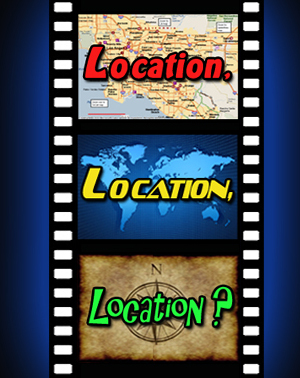In 2013 alone, 900 new movies opened in New York City, reports The New York Times. For indie and documentary filmmakers, the sheer amount of competition out there can be intimidating; however, learning how to shoot, edit and promote your next film might make you the next Lena Dunham.
Click ahead for a few helpful tips for getting a leg-up on the competition
Get the Right Shot
The best camerawork draws on the subject of the film and the emotional intensity of the scene. That’s why those weird angles and jerky camerawork were so successful for “The Blair Witch Project.” Odd angles can work for a thriller, but not an earnest documentary. To get the feel of movement in a shot, you’ll need to introduce movement. For vertical movement, a scissor lift will help you make smooth transitions from low to high angles. For horizontal movement, rent a dolly (and a dolly grip) to track the action. Blurred shots are the hallmark of a novice filmmaker, so always take care to focus. However, foreground objects, if included in a shot to give perspective, should be out of focus.
Make Cutting Room Magic
Much of the movie magic happens after the final scene is shot, when the editing process helps trim the narrative fat and hone the film’s focus. Don’t be tempted to skimp on editing, as it can make the difference between an indie flick no one ever hears about and one that makes the festival circuit.
Often in the movie business, things will happen for you if you just ask, advises Moviefone contributor Chris Ullrich. This sounds cliche, but it’s true. Those big post-production houses have dry spells in between projects, and they may be willing to spend a few days working on your indie film because it beats staring at a wall pretending to work. Of course, they may quote you a price you can’t afford or decline—but you’ll never know unless you ask. If you do try this, be prepared to be patient. Your editing work may get done in small pockets of time, which can extend the time it takes to complete the process. The real value here is in the quality of the work. Your film will get editing that’s far above your pay grade, which can have a major impact on the look and feel of the final product.
Of course, you can edit the film yourself if you’d rather not wait on someone else to do it. If flying solo, indie film superhero Kevin Smith suggests that you solicit crowd feedback before you get too far. Ask your cast, crew, friends and family members for their honest thoughts. When you are making a movie, it’s easy to get too close to it and lose perspective. By seeking and hearing others’ feedback, you can gain valuable insight into how others experience the movie and can avoid novice editing mistakes. Once you’ve gotten a general idea of what works and what doesn’t work, begin editing, making sure to save all material you cut.
Raindance Film Festival’s Jake Foster is a fan of the tight cut. In a fast-paced Tarantino thriller, the actors don’t have meaningful stares or awkward pauses between words. They get to the point, and quickly. Likewise, the tight cut trims out transition time and keeps a good rein on your story. As you cut, take care to match the action so the viewer doesn’t get confused. For example, if your actor is holding a cup of coffee to her mouth in the first scene and you cut a voice-over, she should still be holding the coffee to her mouth. If she were holding a cigarette to her mouth instead, the audience would realize something was missing. If you do make a mistake when editing, go back and edit again from your saved material.
Once you’re satisfied with the work done, have a family and friends preview to showcase your work. Receiving positive feedback from family and friends can fill you with excitement. You’ll need this high energy for the next phase: Marketing and promoting your movie to the world.
Put the “Pro” in Promotion
If you want to get your film shown at festivals, you’ll need to be organized. All festivals have deadlines you cannot miss. Learn from the best with valuable tips from Sundance programmers responsible for scheduling films. They advise:
- Knowing your audience. A short has a better chance at Sundance if it’s less than 25 minutes, since the festival likes to offer six to seven short films in one program. Hence, a longer short film is unlikely to gain acceptance at Sundance.
- Reading the rules carefully. Some festivals require your film to be a premiere, while others accept films that have already premiered. Read and follow any rules festivals lay out; you don’t want your first impression to be a negative one.
- Keeping all players informed. You’ll have better odds if you cast a wide net. However, if you get accepted into one festival, make sure you’re not violating the rules of other festivals by accepting the early bird offer. Check in to gain an idea of how likely your film is to be accepted and when you should expect to hear back.
As you wait to hear about festival acceptance, launch your social media blitz. Begin by creating film-specific accounts on all the major social channels, and inviting friends and family to follow them. Implement a social calendar that outlines what, when, and where you’ll post. The American Film Institute recommends that you highlight a wide range of content, including film, news, event reminders, “sneak peek” photos, short clips, official trailers and press. Following and engaging with industry pros on social media can alert you to new opportunities, and grow your reach.

 July 1st, 2014
July 1st, 2014  Beyond the Marquee
Beyond the Marquee 
 Posted in
Posted in 






